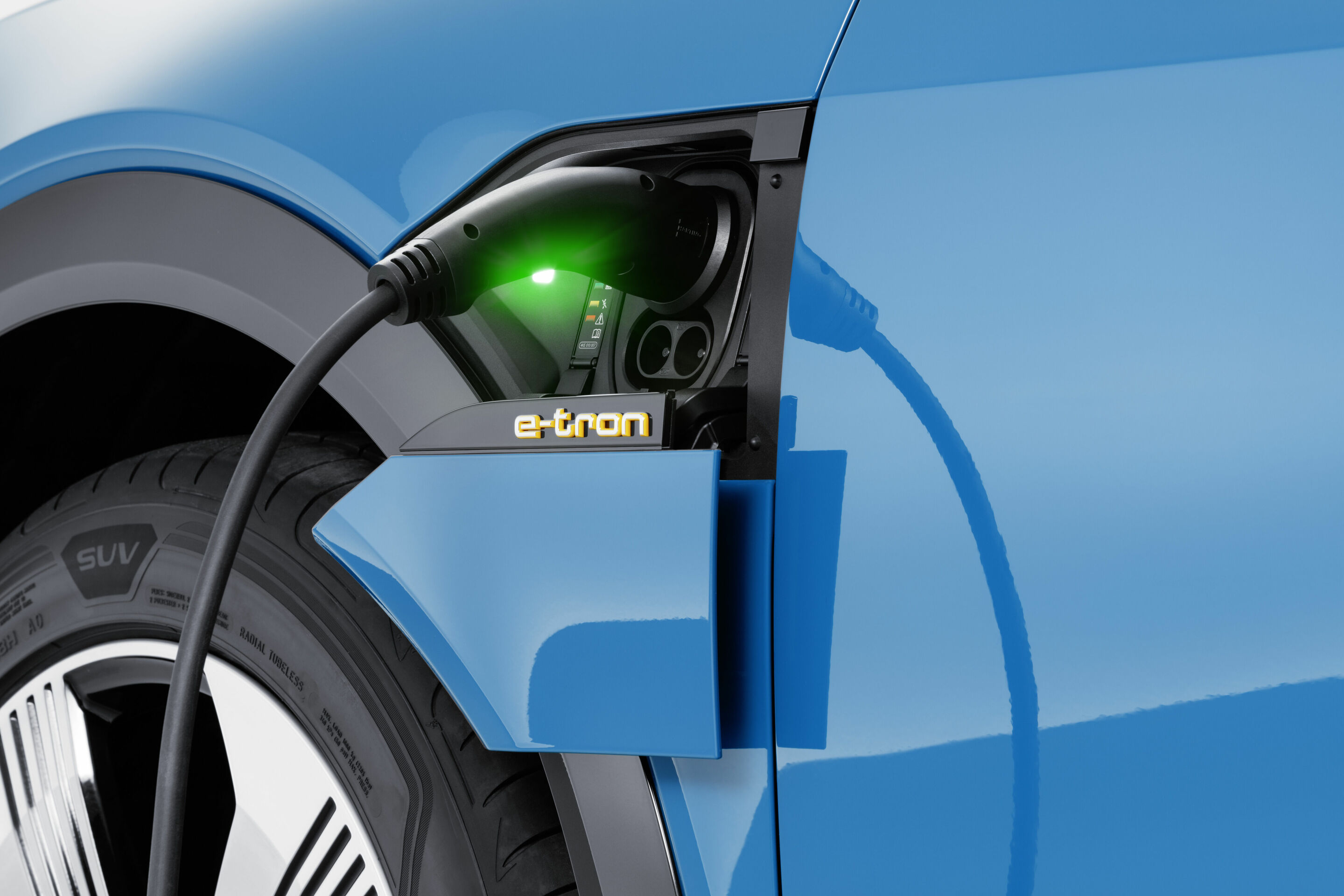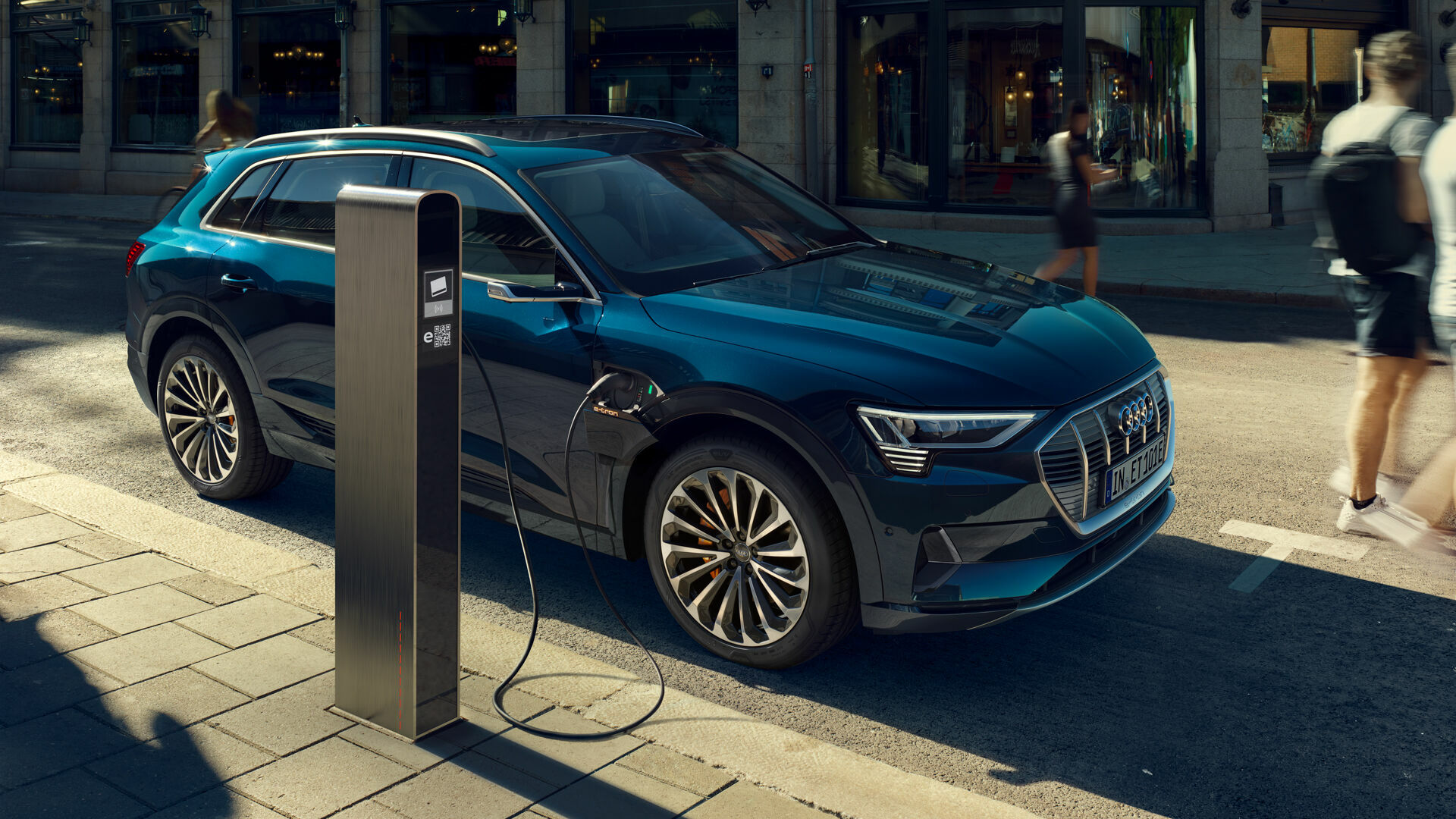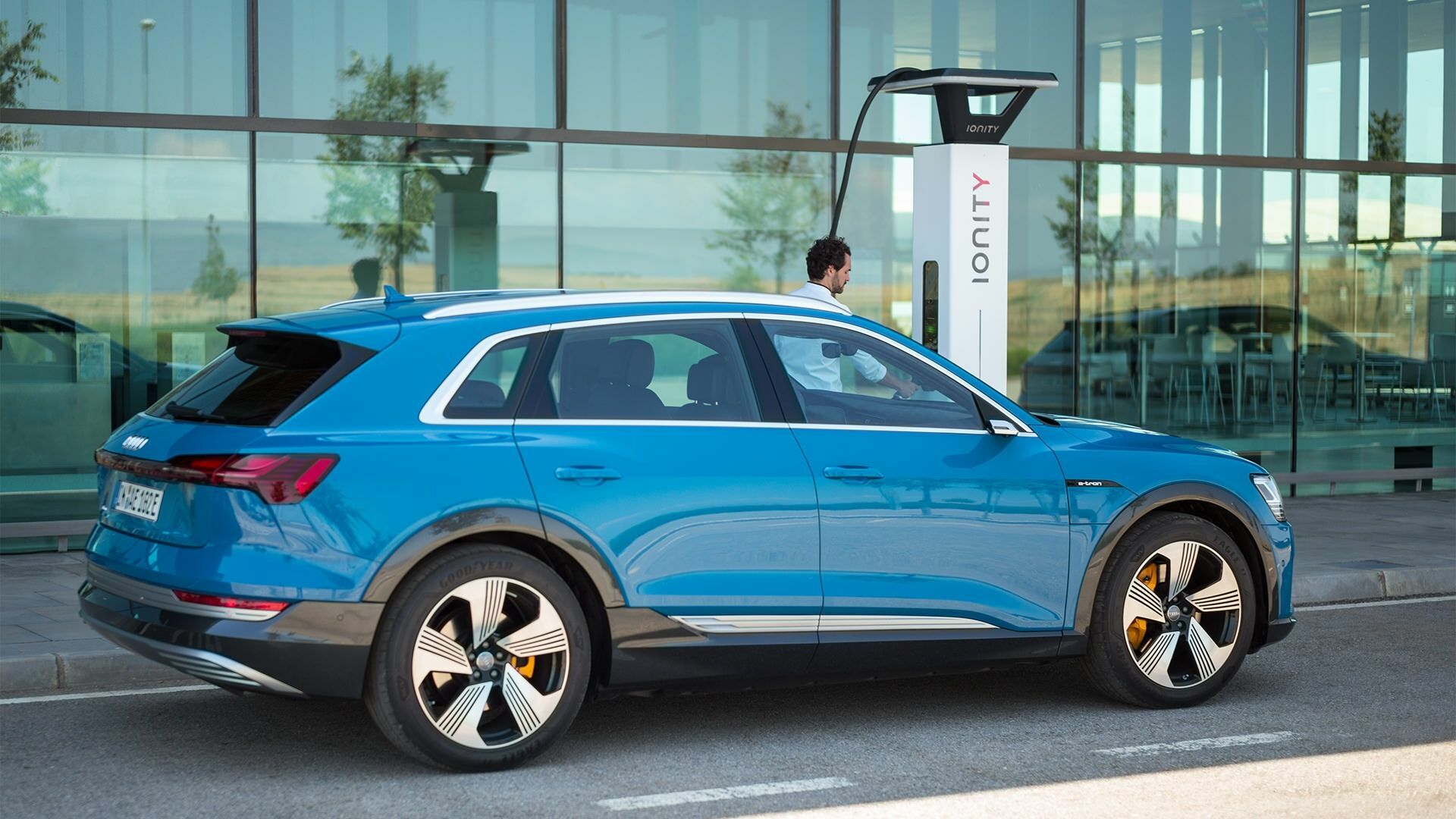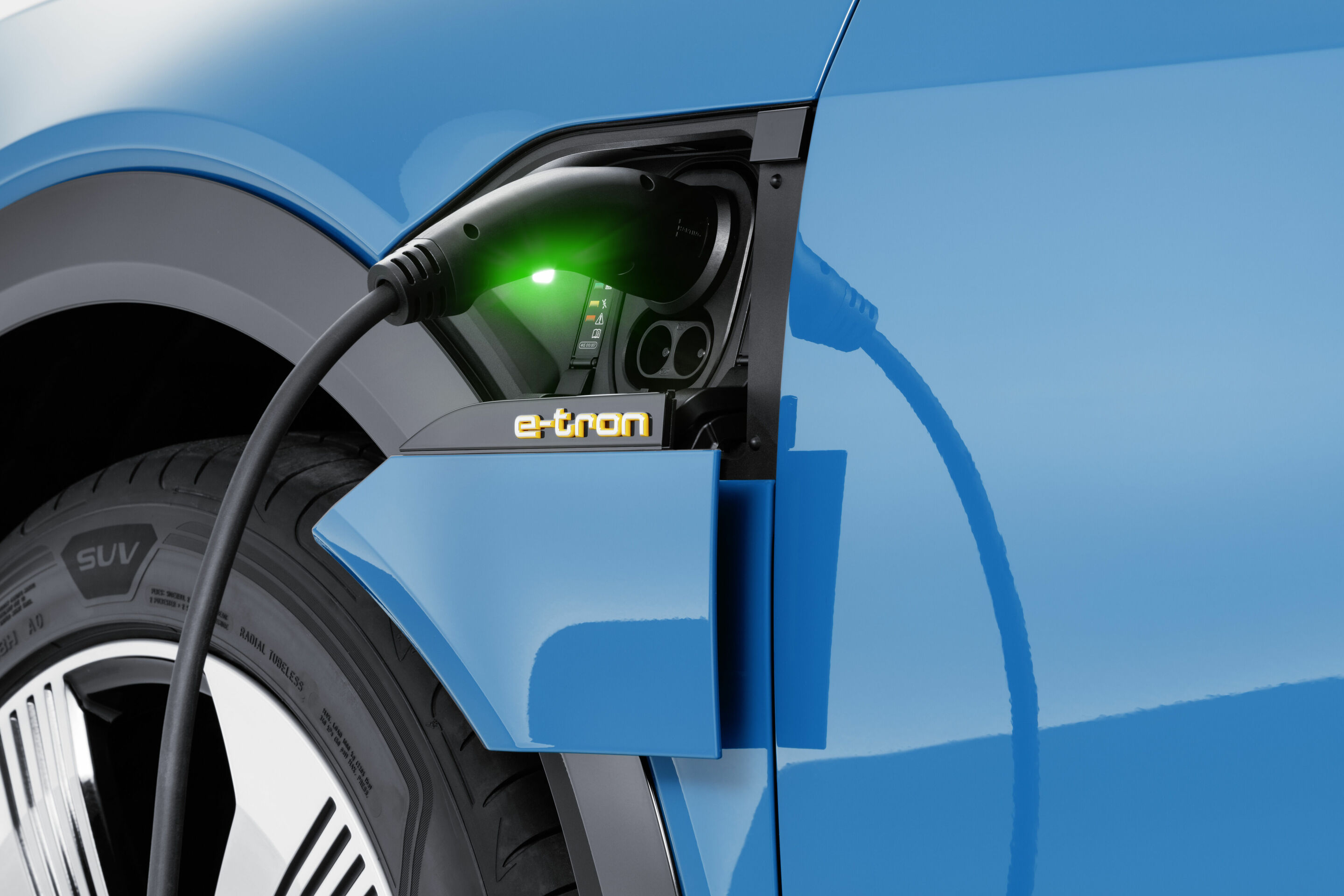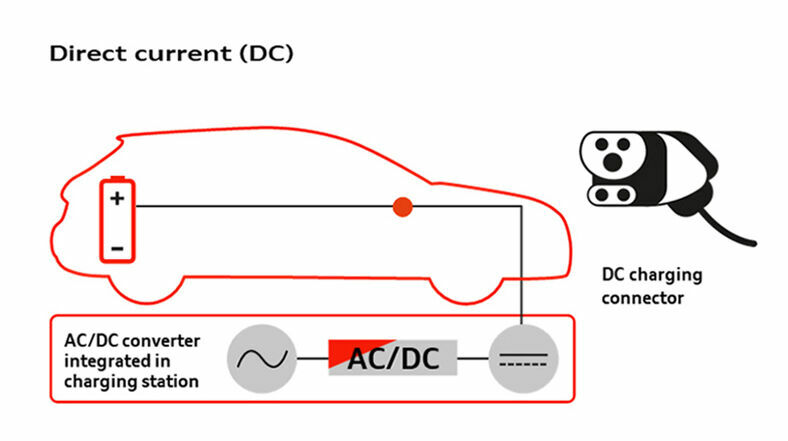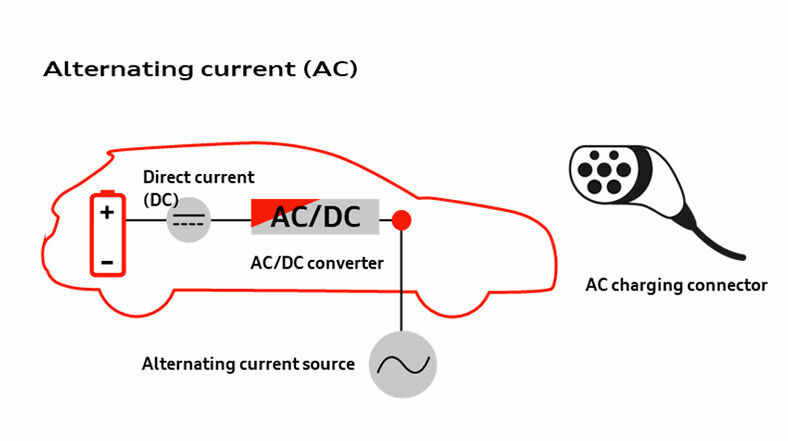Charging technologies
Back to overviewAudi offers a comprehensive and reliable range of charging options with intelligent solutions for at home and on the go. Alternating current, direct current, AC charging, DC charging – we explain the differences.
AC charging
Whether at home or at a charging station, output when charging an electric car with alternating current via the type 2 plug commonly found in Europe is generally limited to 22 kW or in some cases 43 kW. The AC charger in the car is therefore also a limiting factor. Its inverter, which converts the three-phase current into direct current for the battery, can only process a certain output, which is measured in kW. The higher this is, the more waste heat it produces, which reduces the efficiency. To keep such losses as low as possible, the three-phase charger in the Audi e-tron is integrated into the low-temperature cooling circuit.
DC charging
The AC charger in the car is irrelevant when charging with direct current. The electricity flows from the DC charger integrated into the pillar through the CCS (Combined Charging System) directly into the battery. This enables high powers, although heat is also produced here due to internal resistances in the battery. Audi cools the high-voltage battery during charging to achieve charging outputs of up to 150 kW at DC fast charging stations, such as those in the Ionity network. With all lithium-ion batteries, charging speed slows dramatically above a charge level of roughly 80 percent. Fast DC charging is also referred to as high-power charging (HPC).
Three-phase current
Three-phase power is a three-phase alternating current whose phases are offset by
120 degrees. This enables a continuous flow of power and the development of strong rotating magnetic fields. Electrical utilities around the world operate their grids with
three-phase current because it is easy to transform. In the home, larger consumers such as kitchen stoves are connected to the red, five-pole three-phase outlets with a voltage of 400 volts. The current is usually 16 or 32 amperes, and the corresponding output 11 or 22 kW, respectively.
Direct current
With direct current (DC), the electricity always flows from the positive pole to the negative pole without every changing polarity. Regular and rechargeable batteries like those in a cell phone provide direct current. Electronic devices such as televisions, which may be equipped with internal converters for different voltage levels, are operated with direct current. Direct current also enables the low-loss transmission of very high powers across long distances. The lithium-ion battery in the Audi e-tron also delivers direct current while discharging and requires the same when charging.
Alternating current
Alternating current (AC) comes out of the conventional Schuko sockets in the home. They deliver a constant current of 10 amperes and 16 amperes for short durations. With a voltage of 230 volts, output is limited to 2.3 or 3.6 kW, respectively. In an AC line, the electrons continuously change direction with a frequency of 50 Hz, i.e. 50 times per second. This back and forth is called the phase. 230 volt alternating current is single phase.
